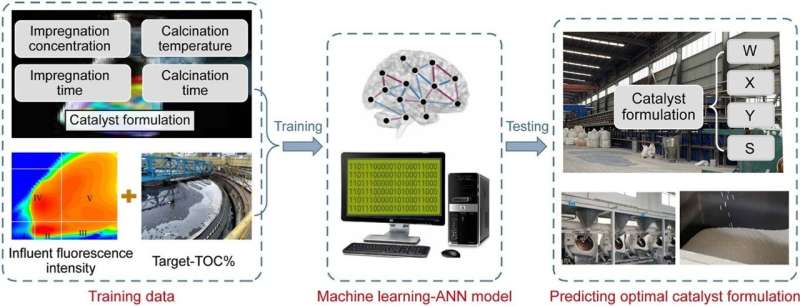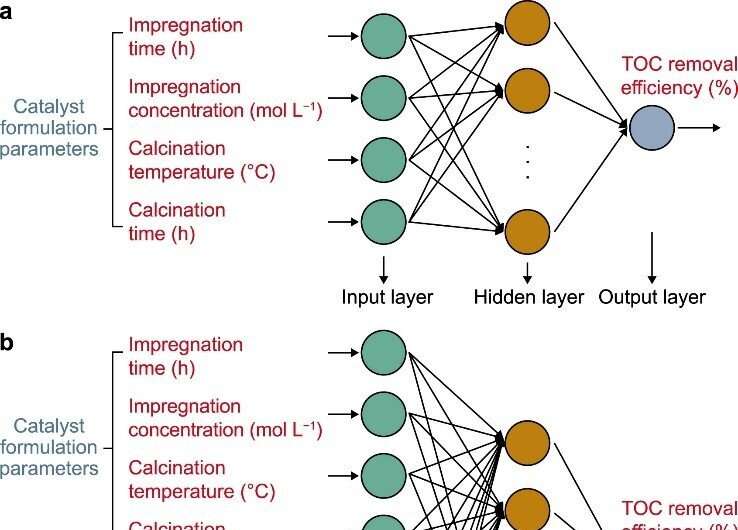This article has been reviewed according to Science X's editorial process and policies. Editors have highlighted the following attributes while ensuring the content's credibility:
fact-checked
proofread
A tailored and rapid approach for ozonation catalyst design

In a new study published in the journal Environmental Science and Ecotechnology, researchers from the Chinese Research Academy of Environment Sciences have employed machine learning, specifically the artificial neural network (ANN) model, to predict catalyst performance based on data collected from 52 different catalysts.
The ANN model demonstrated a strong correlation and generalization ability, indicating its robustness in predicting catalyst behavior. Additionally, fluorescence spectroscopy, which provides valuable information on the composition and concentration of organics in wastewater, was integrated with the machine learning model. This innovative approach leads to more efficient and effective treatment of refractory organics.
Using the Mn/γ-Al2O3 catalyst as an example, the researchers successfully screened a range of catalyst formulations using fluorescence spectroscopy. They determined the optimal impregnation concentration and time of Mn(NO3)2 for specific wastewater compositions. The ANN model then generated an optimized formulation for the Mn/γ-Al2O3 catalyst, resulting in improved catalytic performance. The predicted and experimental values for total organic carbon removal are closely aligned, confirming the effectiveness of the optimized catalyst.
The study also identified the synergistic effect of oxidation radicals (•OH and 1O2) and the Mn/γ-Al2O3 catalyst as the key factors contributing to the improved performance.

This innovative approach offers a rapid and tailored solution for designing ozonation catalysts based on the unique characteristics of wastewater quality. By combining machine learning and fluorescence spectroscopy, researchers can optimize catalyst formulation more efficiently, leading to enhanced treatment of refractory organics in industrial wastewater.
Moreover, applying the ANN model combined with fluorescence spectroscopy holds great potential for further advancements in catalyst development, performance prediction, and process simulation in complex wastewater systems. This approach provides a valuable strategy for researchers and practitioners in wastewater treatment, enabling the development of more sustainable and efficient treatment methods.
More information: Min Li et al, A tailored and rapid approach for ozonation catalyst design, Environmental Science and Ecotechnology (2023). DOI: 10.1016/j.ese.2023.100244
Provided by TranSpread



















